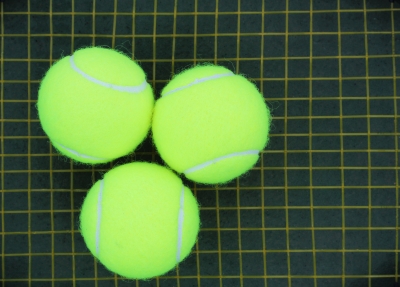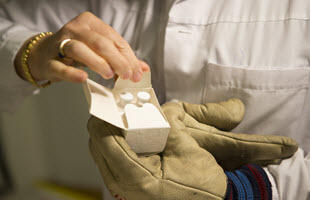Objective truth, social ‘science’ and tennis balls
Writings on these webpages have, of late, been preoccupied with responding to various ‘attacks’ on social science disciplines. Both attacks and responses have raised the issues of the relevance and value of social sciences, particularly as they now face the prospect of dramatically reduced government funding. Some of the attackers have stated (or at least strongly implied) that if a university subject deserves state funding, it needs to be a ‘science’ which aims to discover ‘objective facts’ (such as the disciplines that in the UK now seem to be labelled the ‘STEM’ subjects – a division of the academic enterprise which many are deeply uncomfortable with).
If social sciences such as sociology or political science are not ‘really’ science, does that make them pastimes, hobbies, or perhaps luxuries? Does their lack of scientific basis put them in a similar category to humanities subjects such as fine art, classics or theology? Should degrees in these subjects be awarded as Bachelor of Arts rather than Bachelor of Sciences? If they are not ‘sciences’, and especially if they have no direct ‘relevance’ to ‘employers needs’, or to skills and labour markets, then do none of them deserve state funding? Are students being brave or misguided by enrolling on such unscientific courses with confer fuzzy and unclear labour market privileges? Are those who research, teach, and study the social sciences simply pursuing a pleasant but rather pointless pastime? Like, say, playing tennis?
The above are elementary questions in philosophy of science teaching – is sociology a science? Is there – can there be – a management science? Or a sports science? Some believe that there can be. Some go further, arguing that social sciences need to reconfigure themselves as ‘sciences’ if they are to regain ‘legitimacy’ and thereby improve their claims to state funding. Others hold that such a view is unrealistic and artificially limits the scope of inquiry. My own field (organization studies) is particularly split on this issue between rationalist, objective, ‘scientific’ approaches (often based on numerical analyses) and more textual, subjective, qualitative, ‘humanities’, approaches (typically employing interviews, case studies, or participant observation).
One prominent figure advocating the reformatting of organization studies as a science is Bill McKelvey, Professor of Strategic Organizing and Complexity Science at UCLA’s Anderson School of Management.
Usually preferring the term ‘Organization Science’, he claims that the field is in danger of ‘losing its legitimacy’, for numerous reasons. One of which, he claims, is the work of a ‘rather active subgroup’ which ‘seems bent on setting postmodernism and other relativist postpositivist epistemologies in place as “guides” for organization studies – this instead of worrying about the lack of legitimacy among external user communities.’ I think this ‘active subgroup’ might include me. Well, it would if he had ever come across my writing, which is doubtful.
I’m not denying that analytical rigour is important. Many would suggested that the entire purpose of social science is to apply disciplined, logical, and serious analysis to of all aspects of contemporary social life, to allow us to discuss, unpack, and re-imagine all kinds of social, economic, organizational, and cultural questions. Whether ‘scientific’ or not, this process of exploration is intrinsically valuable because it can help us to understand complex questions in more interesting and/or more accurate and useful ways. Ideally, it can be used to help make more rational and better-informed decisions about the value of policy interventions designed to combat social problems. A commonly-used statement is that social science research is potentially good at exposing social myths and ‘taken-for-granted assumptions’.
Allow me to provide a topical example. I mentioned tennis earlier, and, since Wimbledon is currently on, I hope the reader will indulge a further move in this direction. Anyone watching Wimbledon may notice from time to time an odd ritual where the server raises his or her arm to show the receiver a ball. The receiver then subtly nods or partly lifts a hand to acknowledge the ‘showing’. TV commentators will then typically note that the ‘new balls’ have arrived, invariably leading them to explain the ritual. The new balls are supposedly imbued with special properties – they ‘haven’t yet ‘fluffed up’’, and thus ‘move faster through the air’, making it easier for the server to win points when serving with them. Such statements are repeated endlessly. But is there any truth to them?
Statisticians have often applied their methodologies to sport, perhaps partly because sport (and the ‘expert’ media opinion that surrounds it) is so replete with shibboleths, rituals and myths. Dutch econometricians Jan Magnus and Franc Klaassen, for example, have written extensively on tennis, including their 1999 paper ‘The Effect of New Balls in Tennis: Four Years at Wimbledon’, The Statistician, vol. 48, no. 2. The paper analyses precise data for each point played during four years of men’s and women’s singles matches played on courts Centre, 1, 2, 12 and 13 at Wimbledon. That is a grand total of 88,883 individual points or ‘observations’ – a major dataset by most researchers’ standards. The writing is intensely rigorous, disciplined, and precise. The authors attempt to clearly and logically construct the problem, discussing all knowable issues and complexities, seemingly leaving no stone unturned. And what is their conclusion? Serving with the new balls confers no advantage on the server. The percentage of points won on serve remains almost constant irrespective of the age of the balls (around 64.4%). In fact, there are certain advantages conferred to the server when he or she serves with older balls. A popular sports myth is thus ‘busted.’
Or is it? Despite the paper’s undoubted ‘scientific’ rigour, it (like much good research) raises as many questions as it answers. It notes that the server is statistically most likely to hit an ace when using the new balls (8.7% chance for the men). This probability drops to 7.9% when balls are in their second game of use. But, bizarrely, it then climbs to 8.6% in the third game before falling back to 7.7% in the fourth. How might this ‘third game spike’ be explained? Perhaps the players should also ‘show’ the balls at the start of their third game of use? The paper has limitations of scope – it applies only to Wimbledon singles matches, and only to four years. What impact (if any) derives from changes in playing styles, in tactics, in the makeup of the grass, whether the stadium has a closed or open roof, of the introduction of new technology such as Hawkeye and the call-challenging system? Do the findings hold for other tournaments played on other surfaces? Perhaps most important of all, if the data show that serving with the new balls confers no advantage, then why does this ‘myth of the new balls’ persist, and hence also the quaint ritual of the ‘showing and acknowledging’?
What if we wanted to answer these questions? Do we take the McKelvey route, and design yet further statistical analyses and equations, gather more tennis point data from more tournaments and from more years, create ever more watertight models, and close off all loopholes? Or do we go another way entirely? Are these questions fully answerable with statistical analysis? What would we learn, for example, by interviewing players, umpires, groundstaff, or ball and racquet manufacturers and designers about their opinions and assumptions on how the balls behave? What do the players understand by the ritual of the ‘ball showing’? Have given it much thought? Do the players believe that the new balls confer an advantage and thereby change their tactics to fit? Has the myth somehow become self-fulfilling?
Everyday habitual acts and mythmaking such as these are (arguably) worthy of sociological or anthropological discussion in themselves. But it would be difficult to study them mathematically or ‘scientifically’. The choice of methods we use in our research frame the subjects of inquiry, the process of which brackets out all manner of other subjects and questions that could be equally interesting. Life, with all its ‘messy realities’ is not always amenable to ‘scientific’ analysis and intervention. Insisting the analysis uses only ‘scientific’, ‘hard’, and ‘objective’ forms necessarily reduces the scope and potential value of social science.
Such limitations extend to ‘real world’ applications of research. There is a vast literature on the dangers associated with taking an excessively ‘numbers-based’ approach when trying to control organizations, for example, as target-setting and goal-setting readily produce all kinds of perverse and unexpected outcomes. It is dangerous to try to ‘manage out’ the ‘messy realities’, the things that humanities-type subjects have always grappled with. Much as it may be tempting for some, it is impractical and near-impossible to screen out the politics, the history, the literature, and the drama from the social. Social science always has been (and I think always has to be) a mixture of methods and philosophies, a mixture of disciplines, a mixture of text, discourse, numbers and structures. Attempts to reformat social sciences as ‘hard’ sciences understandable only through statistical techniques seem to me as wasteful, unachievable, and unnecessary. What is to be gained from trying to screen out or number-crunch the intangibles, such as truth, myth, ritual, goodness, and ethics that all play powerful roles in the messy realities of social life? Trying to insist that social science is ‘really’ a science strikes me as a dead end. Or, in tennis terms, ‘a low-percentage play’.
Manchester Business School
University of Manchester
Read Related Articles
Political Science Serving the Public Interest
SAGE opposes the Flake Amendment
A Response to Recent Attacks on Social Science
Want monthly updates on what’s new in Social Science? Become a Member!
























































































